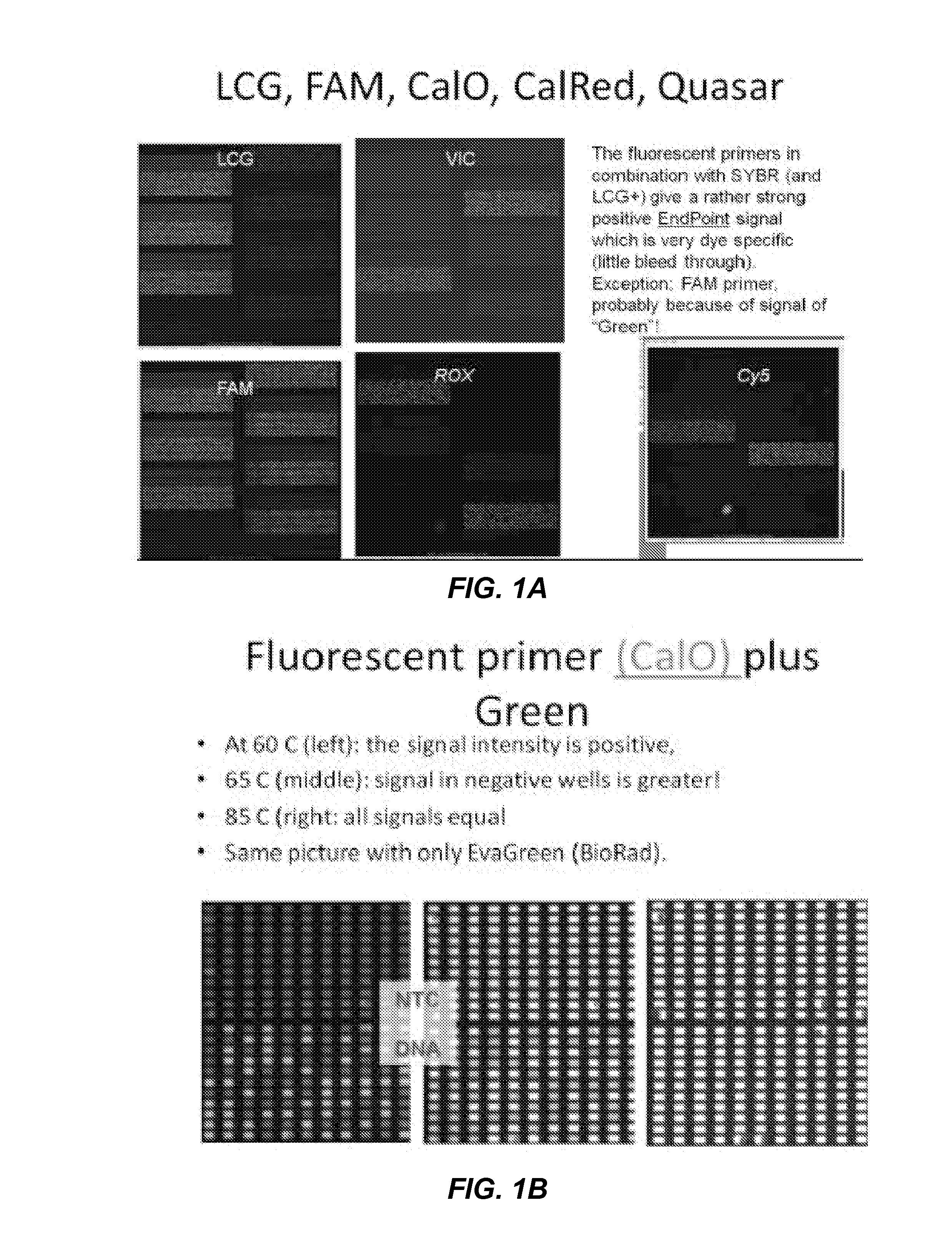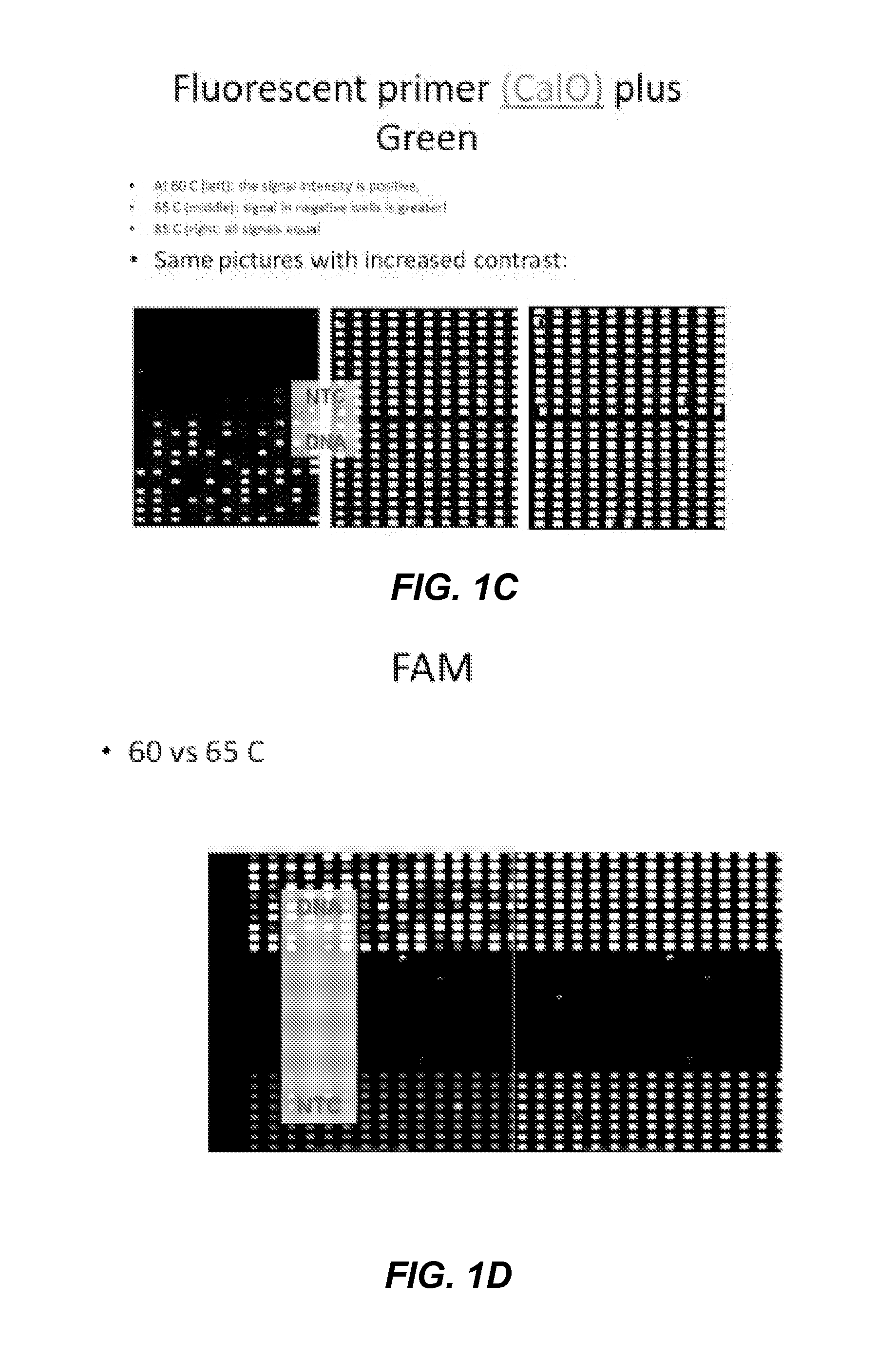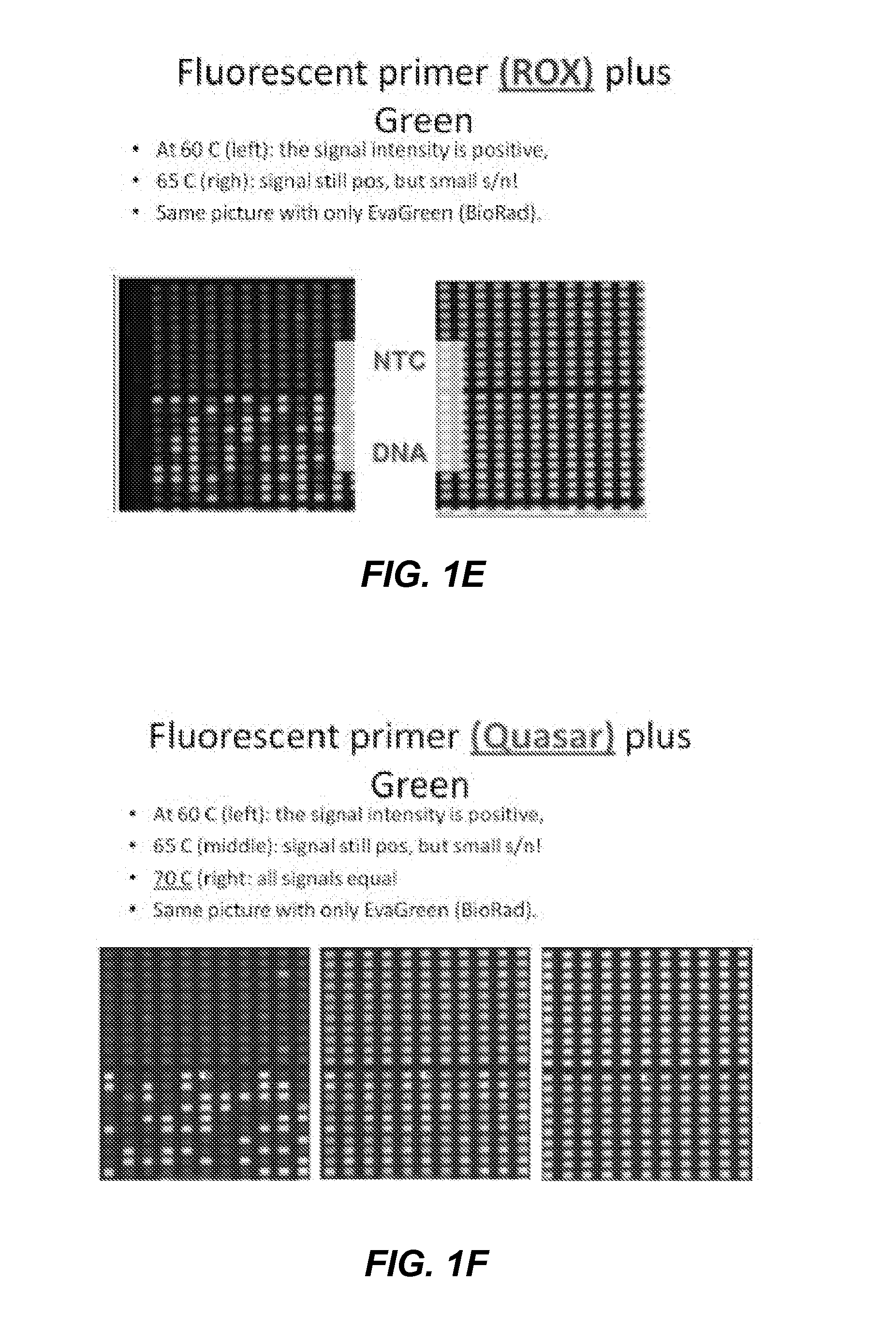Assays for the detection of genotype, mutations, and/or aneuploidy
a technology of aneuploidy and genotype, applied in the field of detecting genotype and/or aneuploidy, can solve the problems of difficult detection of genotype (e.g., mutations) and/or aneuploidy in such fetal dna in a maternal sample, and the difficulty of detecting cell-free tumor dna in bodily fluids of cancer patients,
- Summary
- Abstract
- Description
- Claims
- Application Information
AI Technical Summary
Benefits of technology
Problems solved by technology
Method used
Image
Examples
example 1
Use of Fluorescent Primers and Intercalating Dye to Generate Fluorescent PCR Signals (Real-Time, End-Point, Multiplex)
[0306]There are many methods for the generation of fluorescent signal during PCR (and similar methods) or as end-point signal. Most systems require at least 2 non-standard modifications on probe or primers and consequently are relatively expensive. Usually every assay needs its own probe or fluorescent primer.
Solution:
[0307]This problem can be solved by generating amplification signal by the use of a fluorescent labeled primer and an intercalating dye (“LCGreen” used as best current choice) to generate amplification specific changes in fluorescent signal.
[0308]Aspects of the Solution:
[0309]Fluorescent primers are tag specific—universal detector for any assay.
[0310]Multiplexing by different dyes on different primers.
[0311]End point and real-time analysis.
[0312]Melting analysis of product (LCGreen and primer label).
[0313]Combination with (quenched) co...
example
Alternative Signal Generation (Tag Specific Fluorescent Primers)
[0319]iFRET:
[0320]Signal of dye introduced by the primer is generated by excitation of SYBR, which then FRETs to the dye on the 5′-end of the PCR product. The “classical” scheme for iFRET signal generation (excitation at LC Green wavelength and reading at emission wavelength of primer-dye) did not work. It seems that the observed signal is mainly due to LCGreen itself Differences between primers with different labels was minimal.
[0321]Using the same reactions as above, but reading with excitation and emission of primer-label showed surprising strong signal / noise at 60° C. Signal was even better with End Point reading at 20° C. The background signal increases between 60° C. and 70° C. in a way that the signal of PCR negative reactions is stronger than the signal of positive reactions. The results are shown in FIGS. 1A-G.
[0322]Fluorescent primer plus Quenching oligo: When fluorescent primer is incorporated into ds PCR pro...
example 2
SNP by Tagging and Universal Fluorescent Primers
Problem:
[0323]Find a cost effective method for detection of SNPs in micro fluidic chips.
Solution:
[0324]Perform allele specific PCR with a tag on the allele-specific Forward primers. The two variants carry distinct tags.
[0325]Matching each distinct “allele-specific” tag, a tag-specific fluorescent primer (same sequence as tag) is in the reaction (for example: allele A: FAM, allele B: Cy5). When this primer gets incorporated, it is incorporated into double stranded product and not accessible to hybridization.
[0326]After PCR, end-point reading is performed (usually at room temperature). A “quencher oligonucleotide” with 3′ quencher that has sequence complementarity to at least part of the tag sequence will hybridize to unincorporated fluorescent primers and quench their fluorescent signal (The 3′ quencher automatically blocks the oligos from serving as PCR primers). Fluorescent primers incorporated into PCR product will emit a signal.
Requ...
PUM
| Property | Measurement | Unit |
|---|---|---|
| Tm | aaaaa | aaaaa |
| temperature | aaaaa | aaaaa |
| temperature | aaaaa | aaaaa |
Abstract
Description
Claims
Application Information
 Login to View More
Login to View More - R&D
- Intellectual Property
- Life Sciences
- Materials
- Tech Scout
- Unparalleled Data Quality
- Higher Quality Content
- 60% Fewer Hallucinations
Browse by: Latest US Patents, China's latest patents, Technical Efficacy Thesaurus, Application Domain, Technology Topic, Popular Technical Reports.
© 2025 PatSnap. All rights reserved.Legal|Privacy policy|Modern Slavery Act Transparency Statement|Sitemap|About US| Contact US: help@patsnap.com



